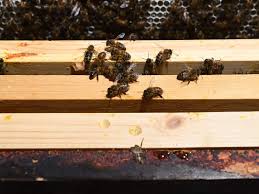Understanding the Rising Incidents of Bees Attack

Introduction
Bees play a crucial role in pollination, contributing to the ecosystem and global food supply. However, recent reports indicate a worrying trend of increased bees attack incidents in various regions. These attacks not only pose a risk to individuals but also highlight underlying environmental changes affecting bee behavior. Understanding the causes and implications of these attacks is essential for ensuring public safety and preserving bee populations.
The Surge in Bees Attack Incidents
Data from the National Pesticide Information Retrieval System (NPIRS) suggest that bees attack incidents have risen significantly in urban and rural areas alike. Factors such as habitat loss, climate change, and increased human-bee interactions contribute to this alarming trend. For instance, a report from the American Beekeeping Federation indicated that over 70% of beekeepers have experienced aggressive bee behavior this season, which often leads to assaults on unsuspecting individuals.
Notably, in August 2023, a swarm of bees attacked a group of joggers in a park in Rajasthan, causing panic and injury to several people. Eyewitness accounts indicate that the joggers disturbed the bees’ hive inadvertently, prompting a defensive reaction from the colony. Local authorities are urging people to maintain distance from wild bee colonies and educate themselves on bee behavior.
Causes of Bee Aggression
Several factors can trigger aggressive behavior in bees: environmental stressors, disturbances near their hives, and even the presence of certain chemicals. Bee colonies facing threats may feel compelled to defend against intruders more aggressively. The changing climate is also affecting flowering patterns and bee food sources, which can lead to increased competition and stress within colonies.
Preventive Measures
To mitigate the risk of bee attacks, experts recommend several preventive measures. Educating the public about hive behavior is crucial; individuals should recognize signs of swarming and avoid direct disturbance. Additionally, local governments should promote the planting of bee-friendly plants while also managing and relocating aggressive colonies safely. Engaging professional beekeepers for swarm removal is vital for both human safety and preserving bee populations.
Conclusion
The rising frequency of bees attack incidents serves as a cautionary tale about the intricate relationship between humans and nature. As human activities continue to encroach upon natural habitats, understanding and respecting the boundaries of these vital pollinators is essential. Future efforts should focus not only on public safety but also on sustainable practices that protect bee biodiversity, ensuring that these integral creatures continue to thrive.









